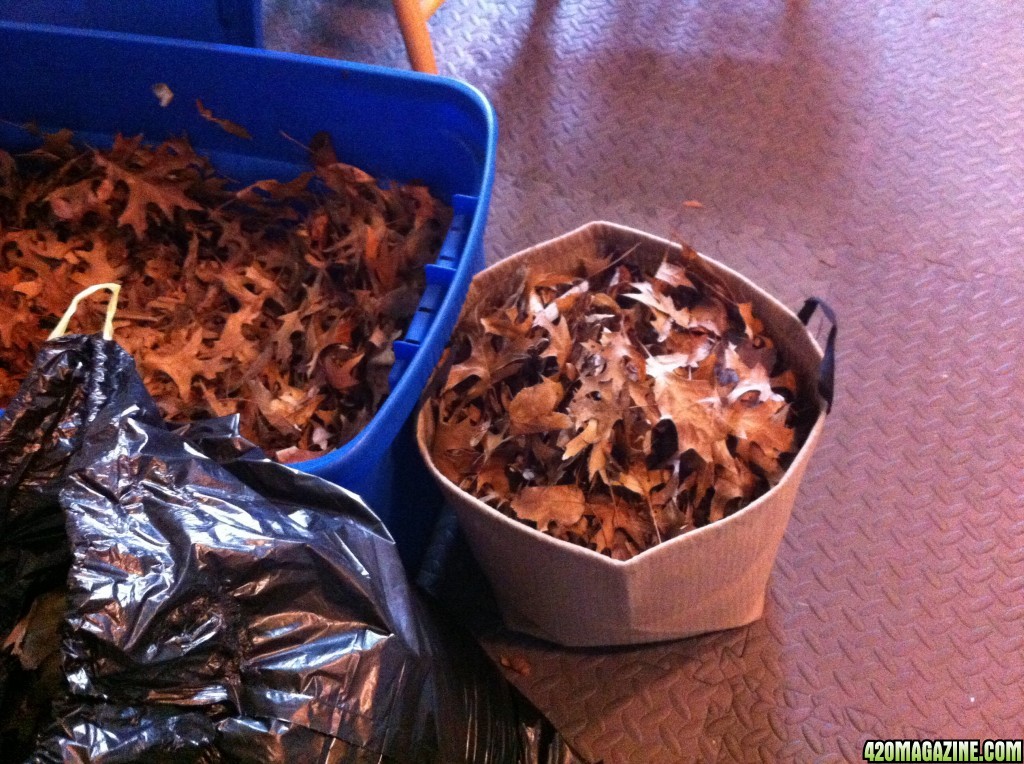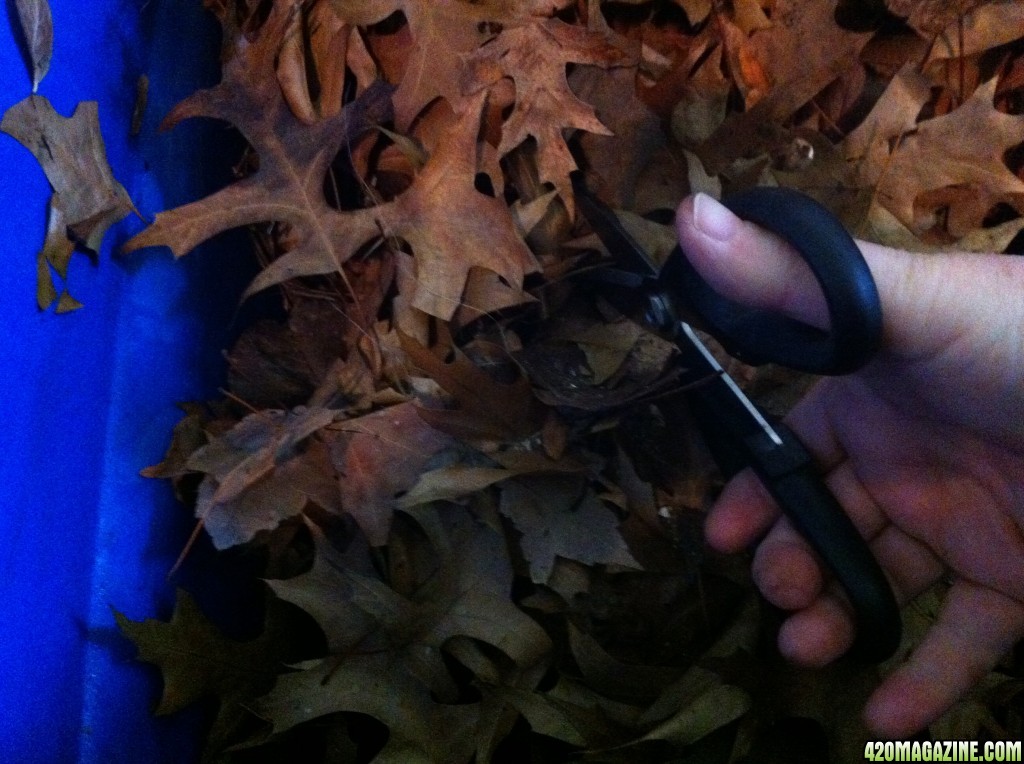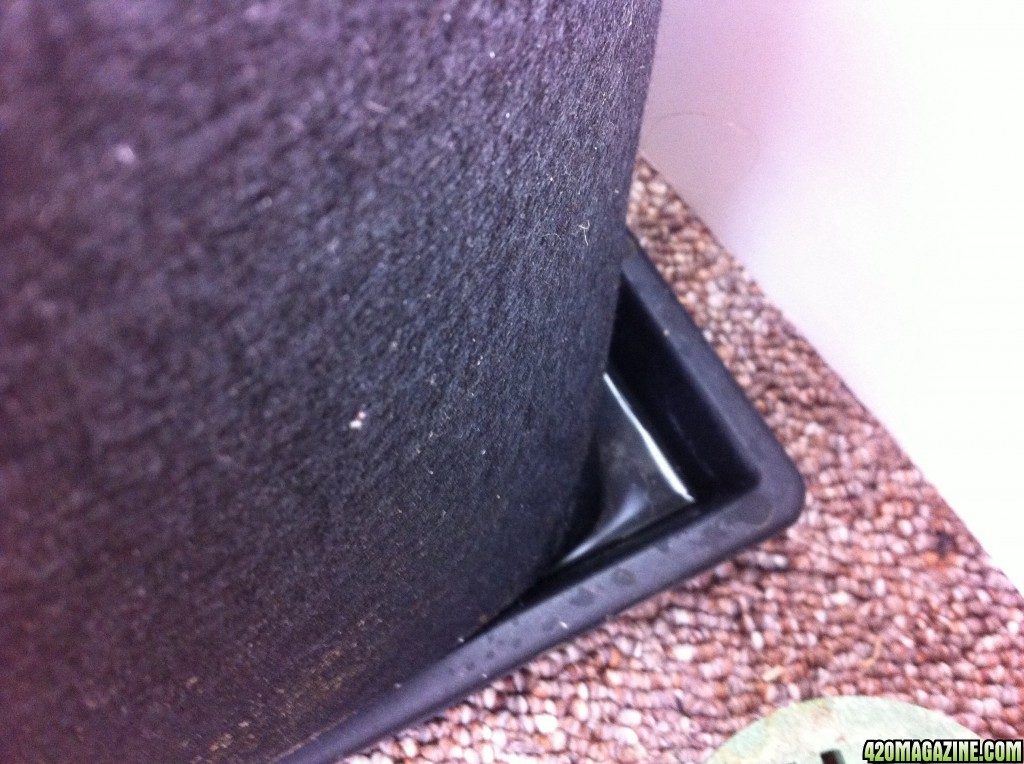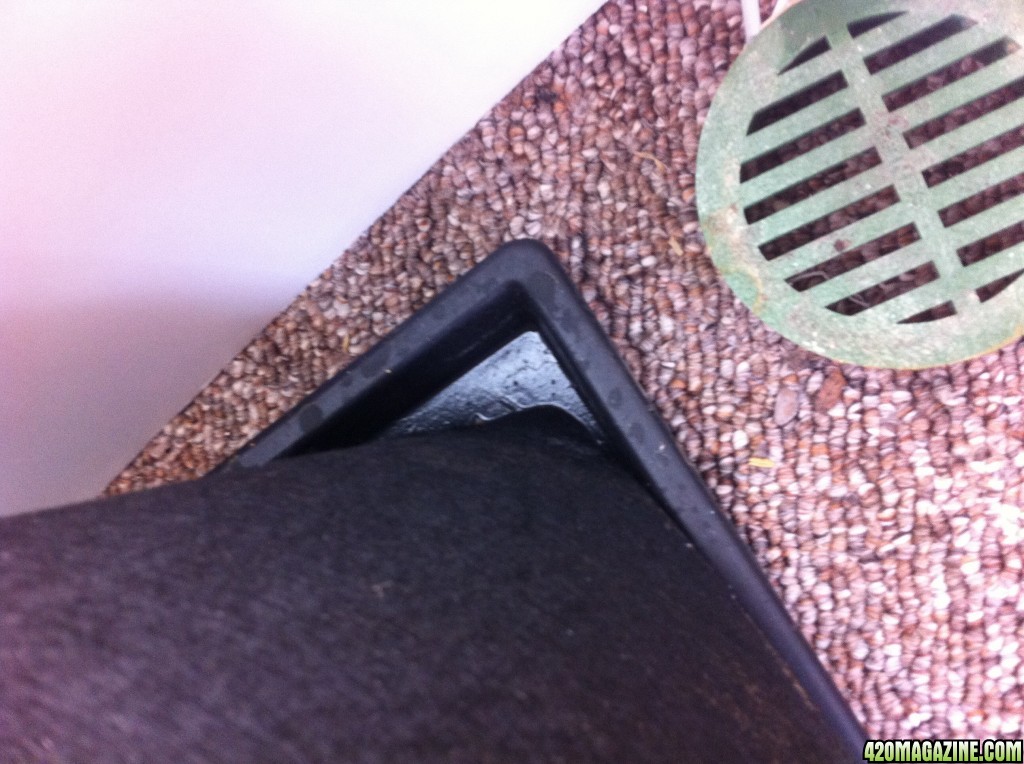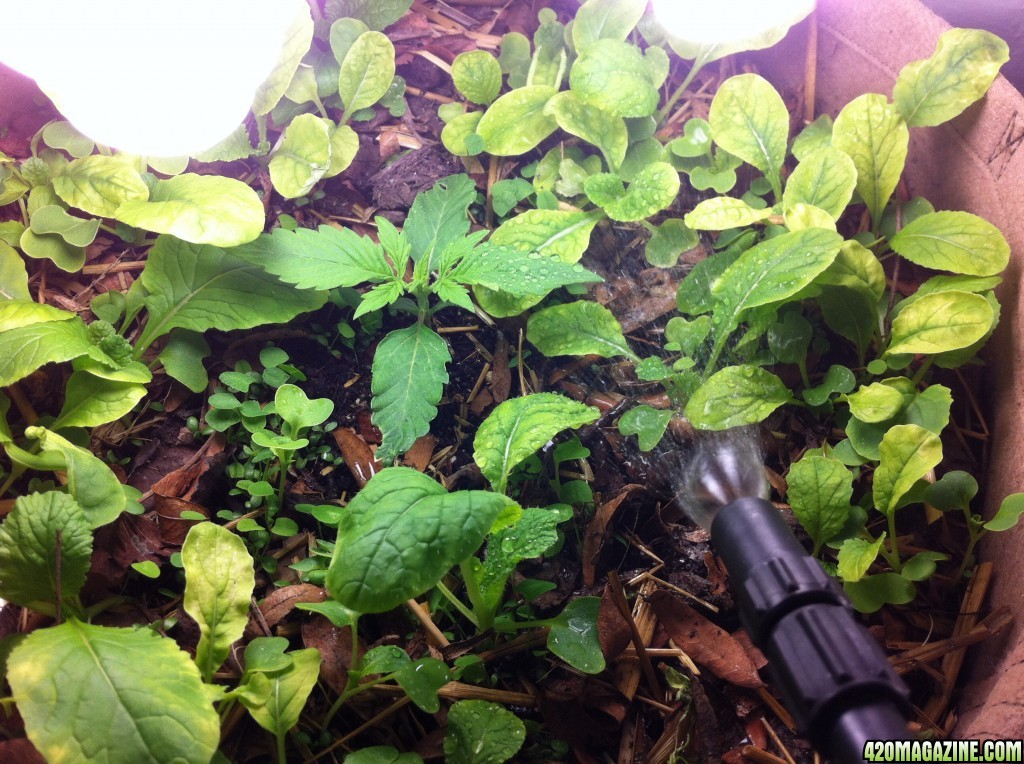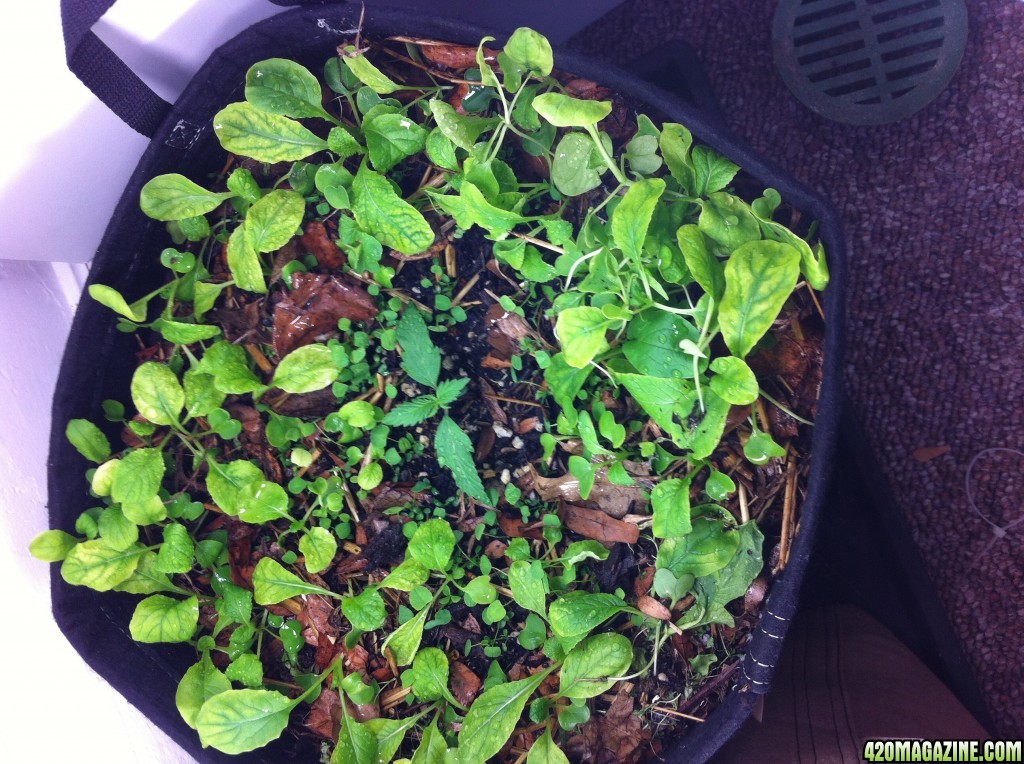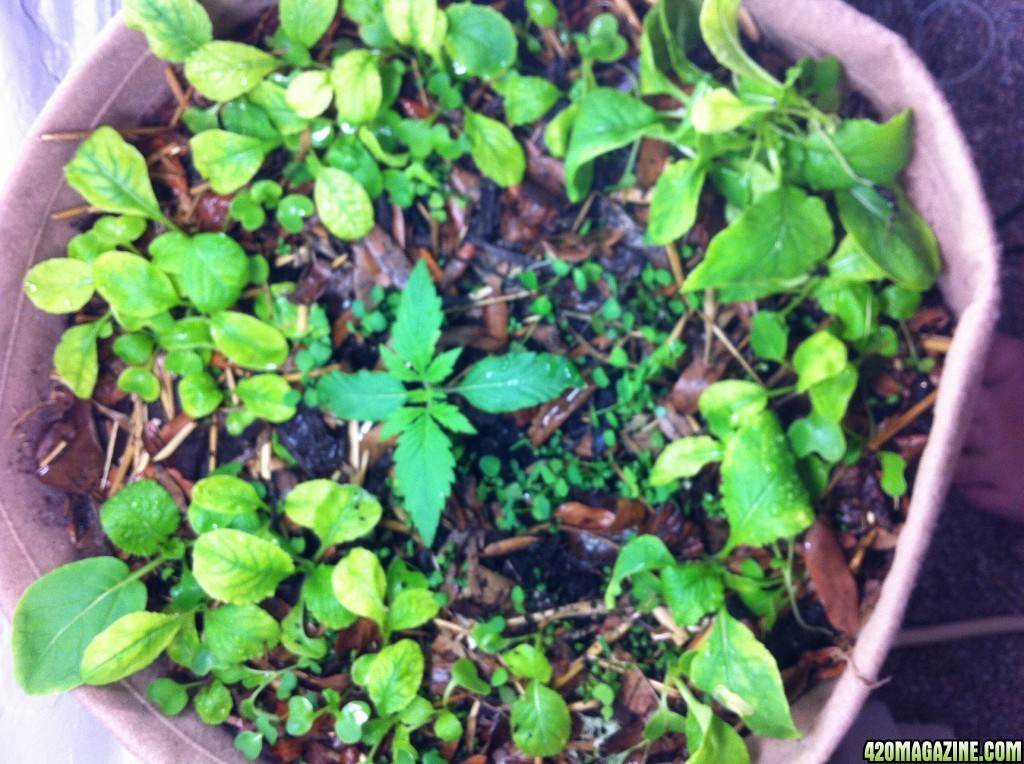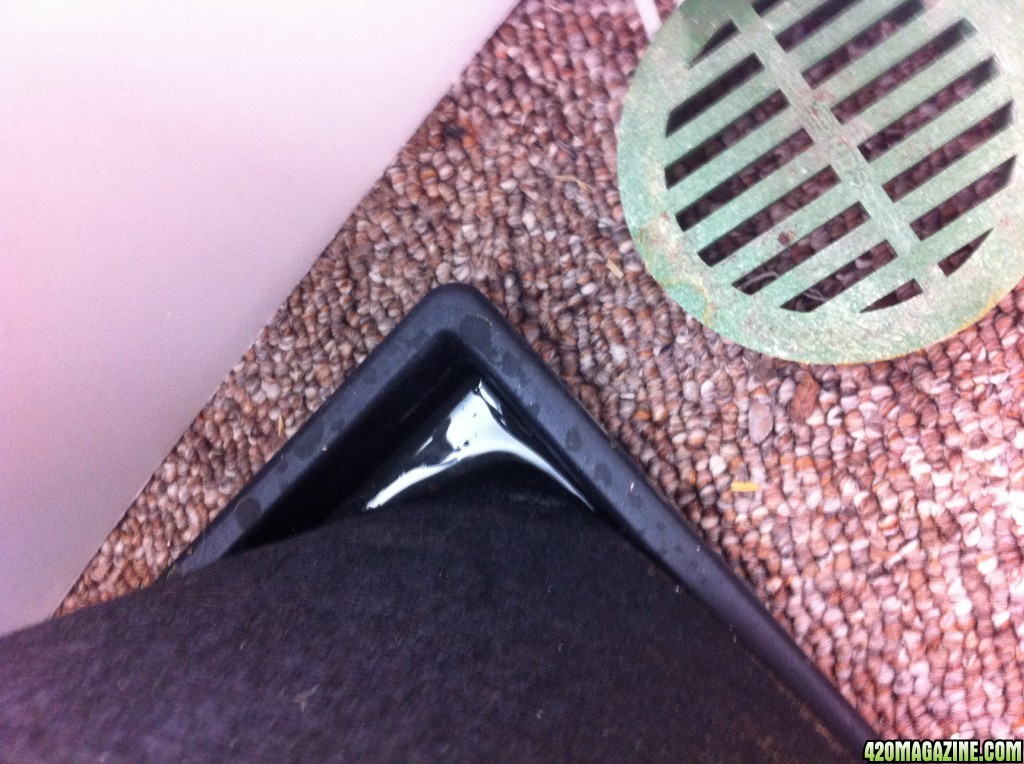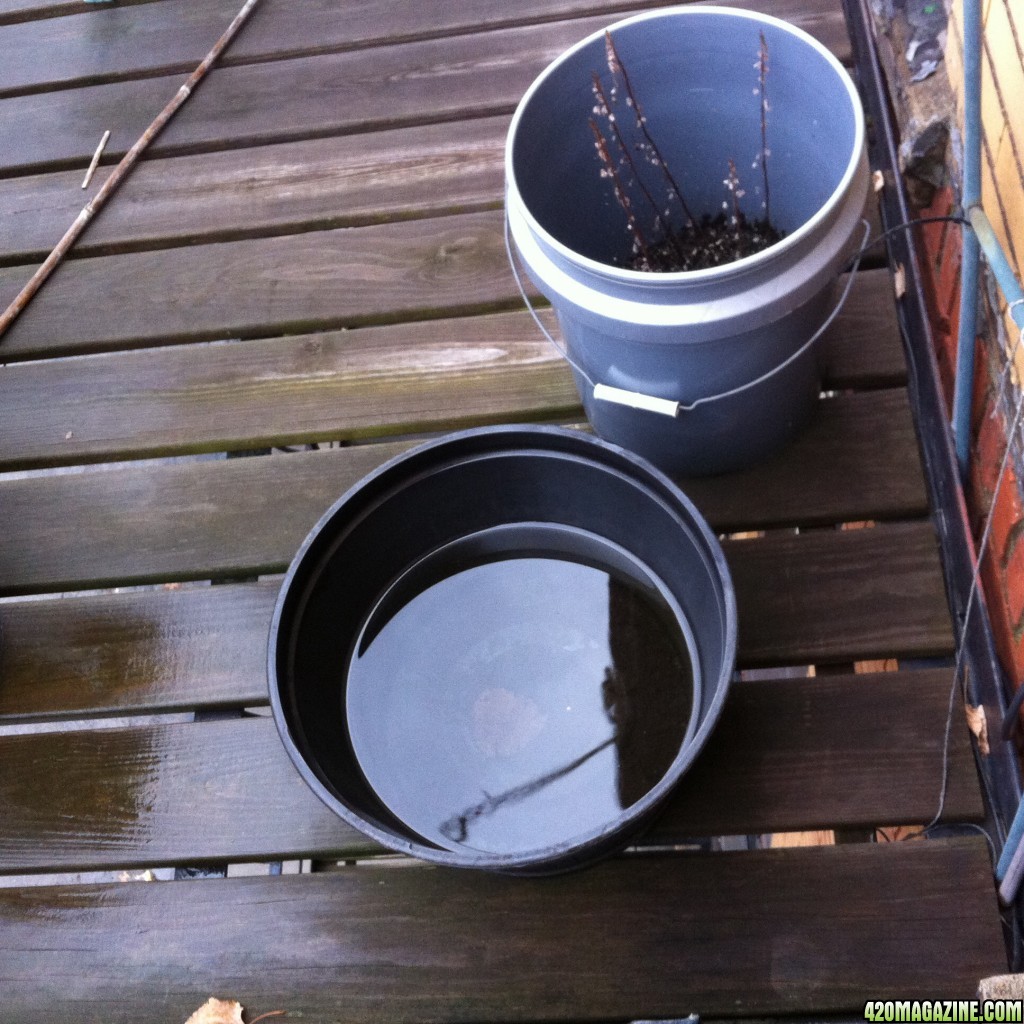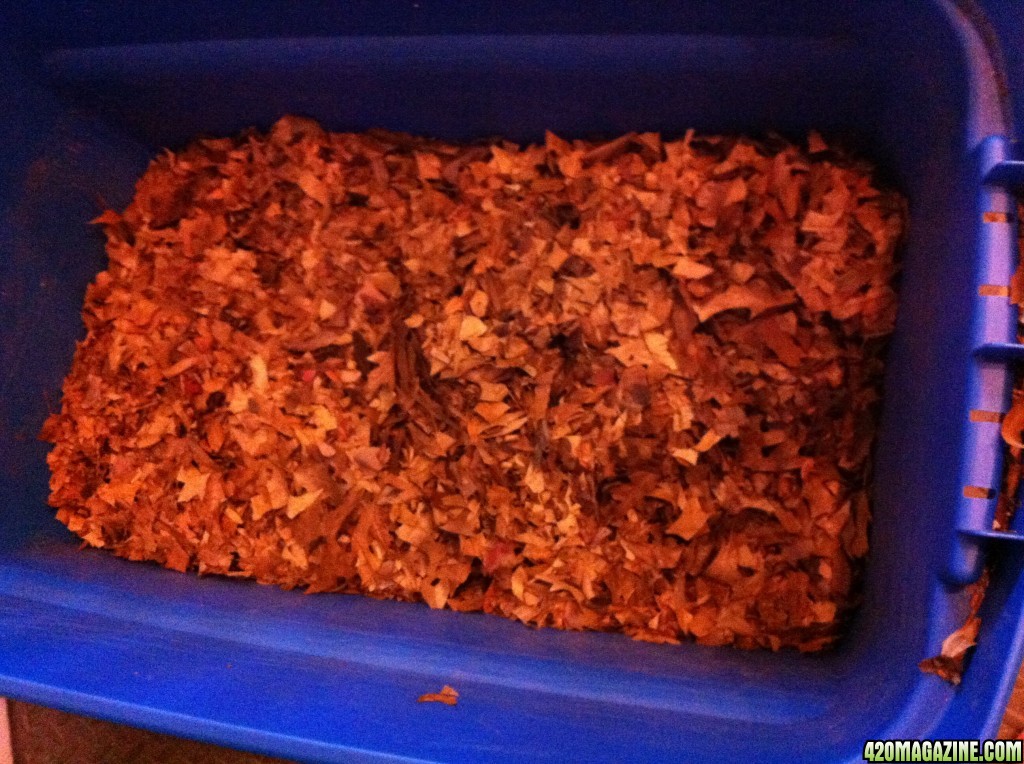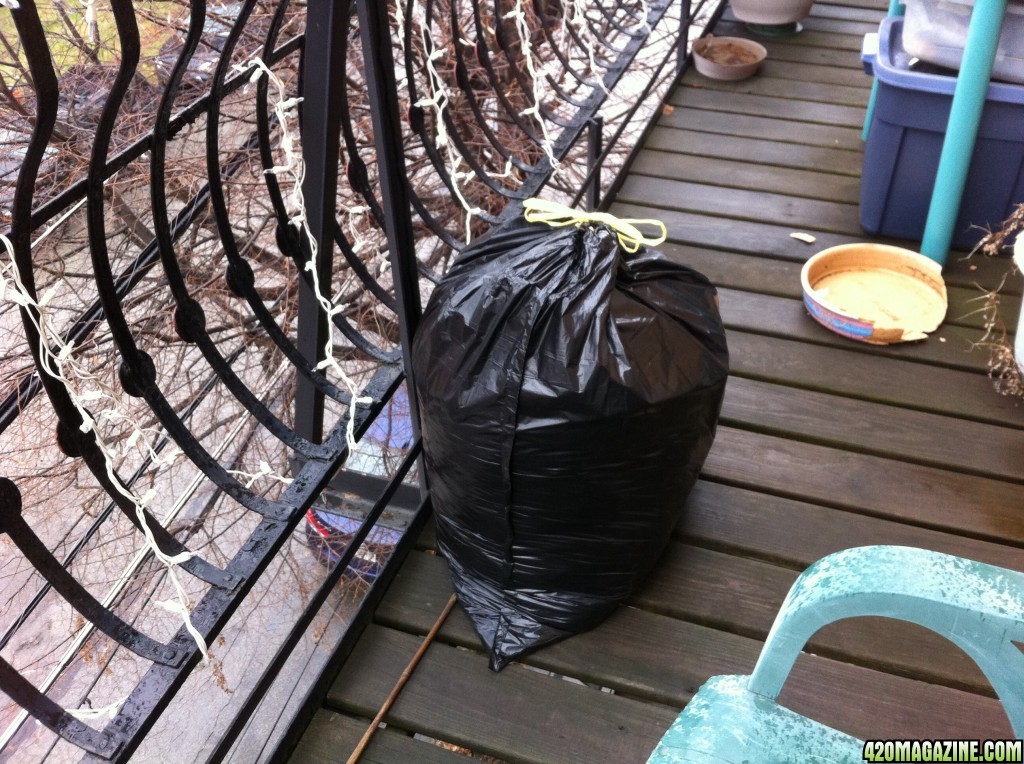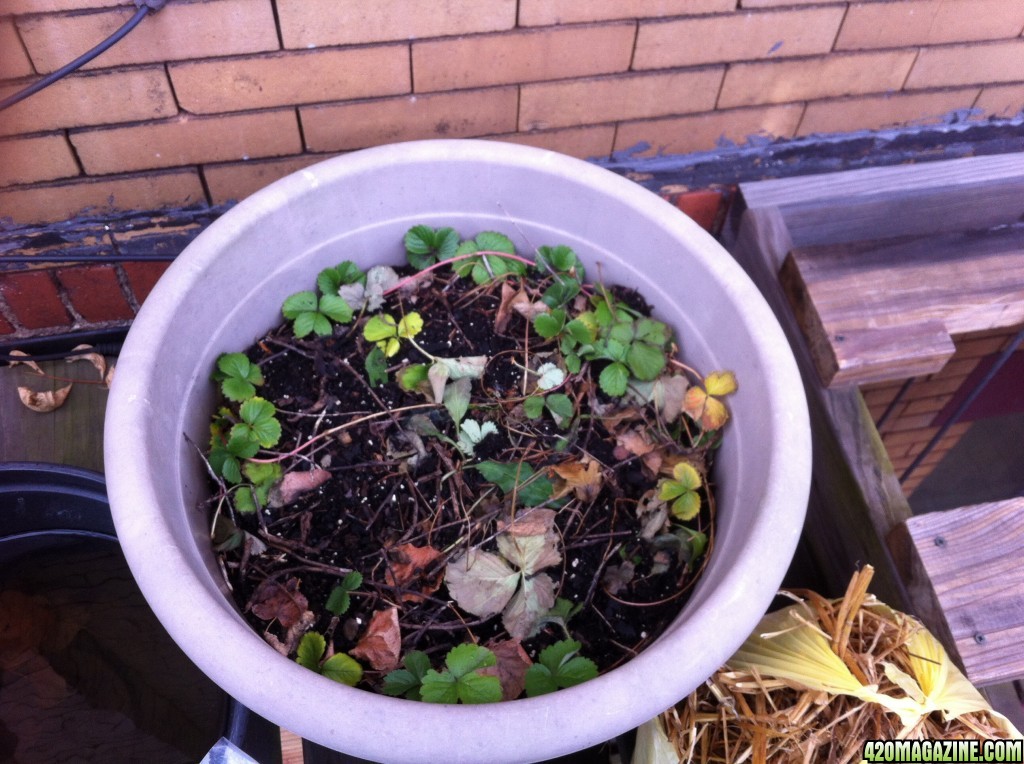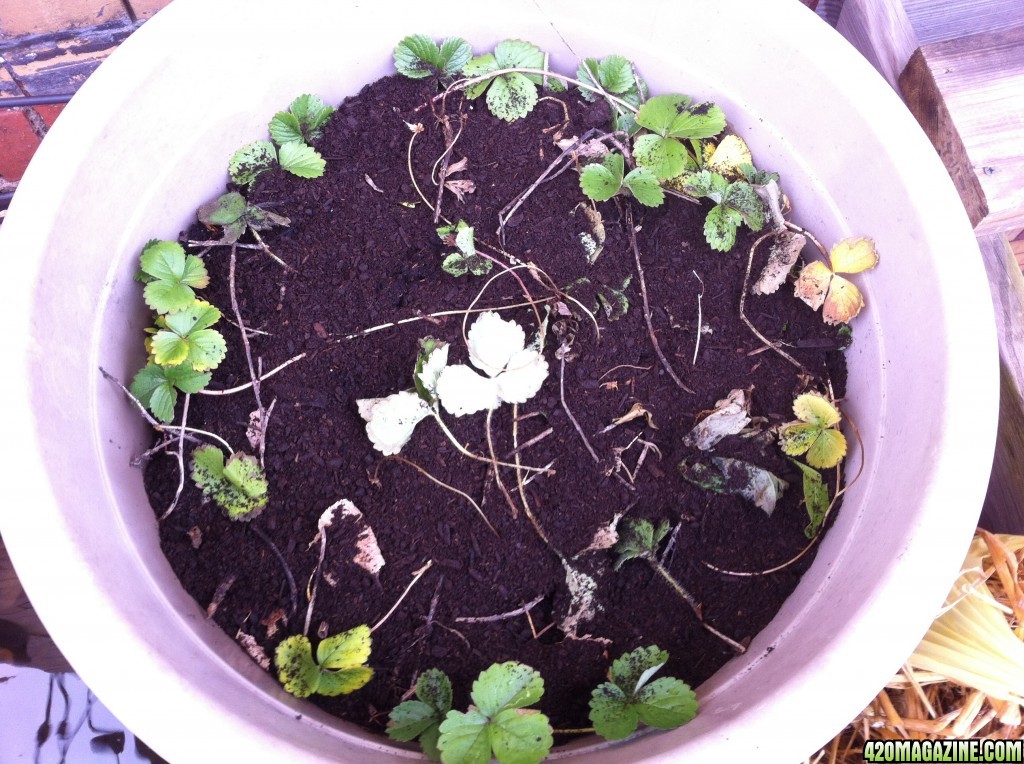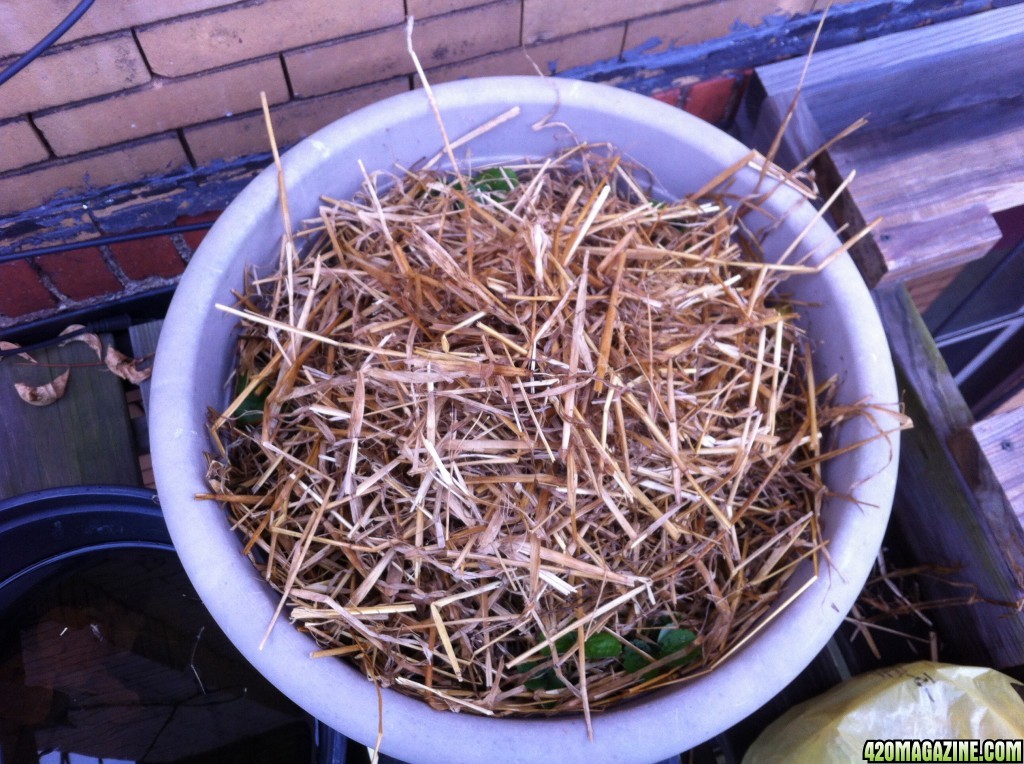It's time to begin processing these leaves. I want to start a worm bin in the extra Geo Pot and I've spent hours reading about vermiculture in fabric pots. The very first thing I need to do is to cut these leaves up to speed their decomposition. This is most easily done with a chipper or, at the very least, a weed wacker. We live in an apartment located in an urban area with no yard to speak of. The weed wacker went with the house we lost years ago and I have neither of these tools available to me. What I do have is time while Dale take a morning nap and a sturdy pair of kitchen shears. I set to work.
Step one; decide how many leaves will be necessary to fill the pot. I packed the pot to the brim....
..... put the rest of the leaves that were left in the bin back into the collection bag, then dumped the leaves into the empty bin. Now to begin chopping. I found the best approach was to grab a handful and simply begin slicing through it. After that it's a matter of repeating that process over and over and over and over.......
I know some of you are thinking I'd have to be crazy to take all this time, but it got the work done. It also gave me the opportunity to take notice of the healthy amount of fungi already at work on the leaves, which made me smile a lot as I worked.
I quickly learned that you need to let the scissors do the cutting or the hands were going to suffer later. About ten minutes in I decided that I needed to begin watering the girls, which would give me a break from the monotony of cutting (truth be told, I wasn't bored by this process - I used the time to give some deeper thought to what I had learned from my research).
This gives me an opportunity to share the evolution of my watering technique. I begin by gently adding plain rainwater to the tray, allowing the pots to wick up as much as they could. This only takes a few minutes. We live in an old Victorian building. None of the floors are level, including the grow closet. I just keep slowly watering until water begins to collect.
I went back to chopping leaves for ten minutes to allow this excess to wick back up. We don't want any standing water when we begin top drenching. When I came back this is what greeted me. Sorry about the sideways shot.
Time to begin the top watering. Today's water had 1/4 cup of coconut water mixed in. I've developed a system of two spiraling passes per plant, alternating back and forth, with a ten minute pause until the next two passes. For that ten minutes I went back to chopping leaves.
As I water I thin out the living mulch. We want plants that will always be growing. We don't want plants that crowd the cannabis. You can see where I dump the pulled ones off to the front right of each pot (sideways shot here - I'm still learning guys). This adds food for the worms. We need to keep them happy and healthy.
The Buddha is growing nicely.....
..... and the THC Bomb is beginning to explode in growth.
I kept up this process until I came back after ten minutes of chopping to find excess water in the corner. This is my indicator that I have successfully saturated the soil. I love the way these pots let the excess water just run out.
I take this slow watering process for two reasons; first to keep from overwatering and second to conserve rainwater. Particularly at this time of the year rainwater can be hard to come by and I'm trying to make mine go as far as possible. I collect the rainwater in a basin on the balcony. It's a matter of staying on top if things so it doesn't get wasted. This picture was taken after I relieved it of four gallons of newly fallen rain.
I kept at the leaves until I couldn't find any more whole leaves or large pieces. By the time I was finished, this was what the leaves looked like.
The excess leaves got tied up in the bag, making sure that gases could escape during decomposition, and set out on the balcony to winter over in the sun. By the end of summer at the latest I'm going to have some serious plant "manure" to use.
The next step is to add some interesting things to the chopped leaves. That will have to wait until later. Domestic duty calls.



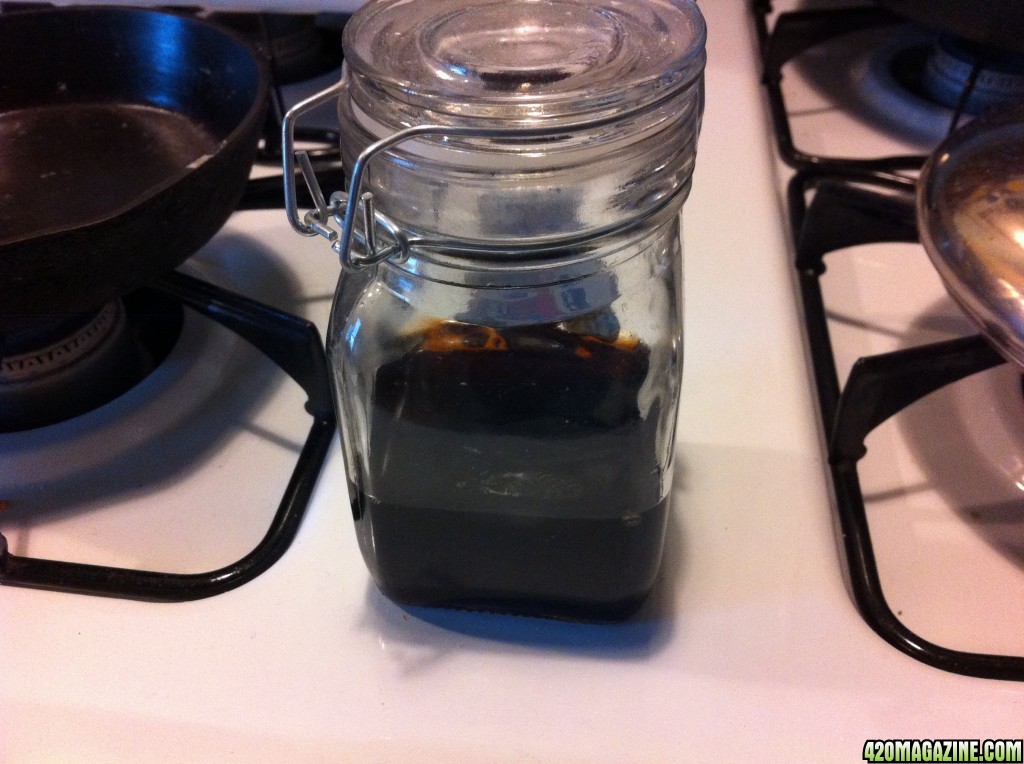


 maybe we all have our little god complexes, seems very human to me.
maybe we all have our little god complexes, seems very human to me. 


